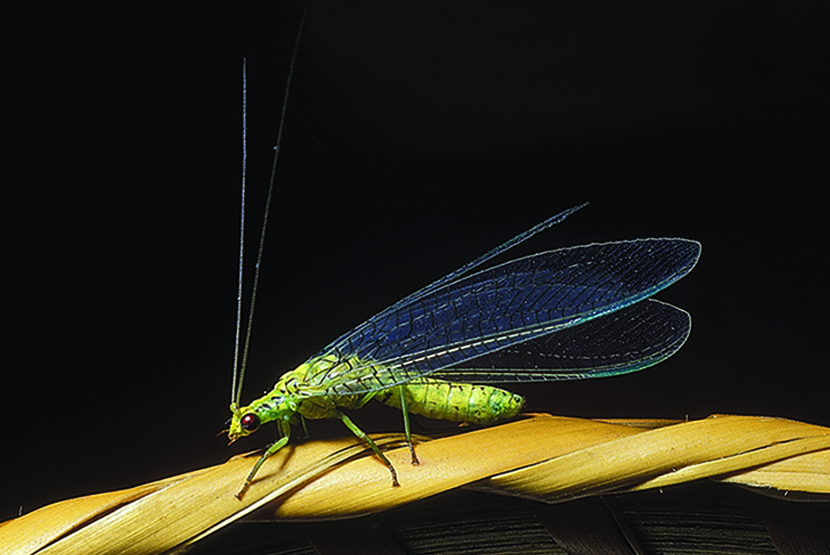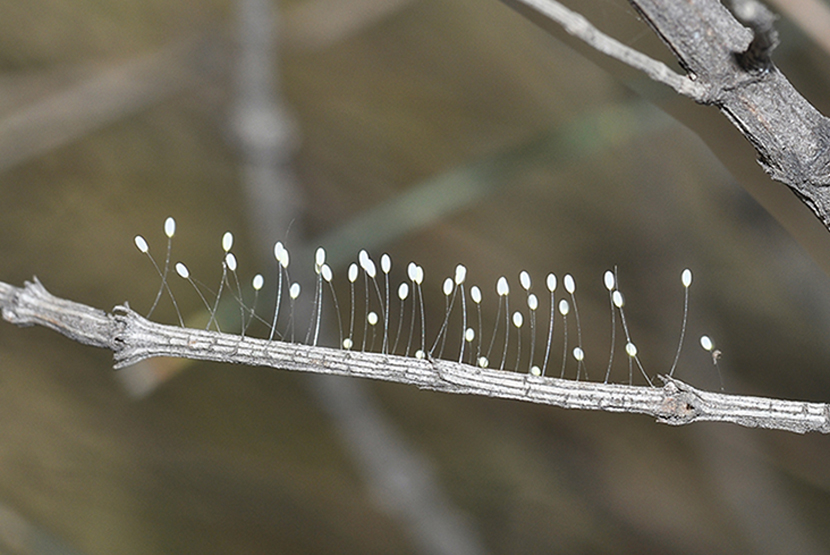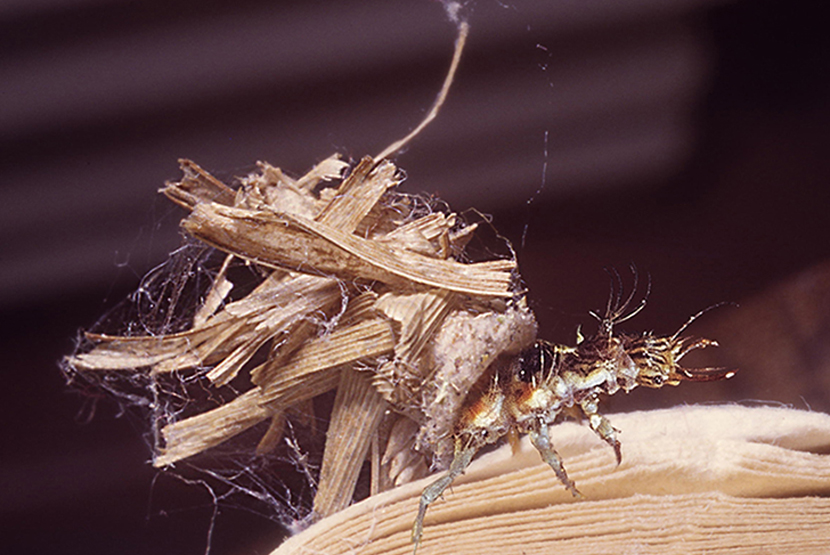Delicate monster
The delicate looking creature in the accompanying pic is aptly named a lacewing. But don’t be fooled by her demure feminine charm, this lady is a cold calculating killer. And she was, even as a child.
However, in her case, I know you gardeners of North Melbourne tend to turn a blind eye, as the immature versions are great for ridding your garden of many of its more harmful bugs.
Not hard to see why these delicate but voracious insects are commonly known as Golden Eyes, lacewings start life as aggressive little bulldozer types [known as antlions] which are tiny roaming killing machines, skewering the remains of their prey, and other garden debris, onto the small spines on their back in order to camouflage themselves, becoming virtually invisible amongst the garden’s leaf litter.
Considered the gardener’s friend, there are 5000 known species, 600 of which are endemic to Australia, and if you are inclined to do so, you can actually purchase specimens of this tiny killer from your favourite garden supply shop to help keep your garden bug-free.
Lacewings, which have a short life span of only three to four weeks, have the spider-like habit of injecting their victims, mainly aphids, caterpillars, mealy bugs and scale, with a digestive fluid which allows them to suck their victims dry. Acting as the gardener’s friend, this they can do at an astonishing rate of up to 60 aphids per hour. Perhaps you can shame your kids by mentioning this next time they balk at eating their broccoli.
Not just a pretty face, the female lacewing understands the law of the jungle as well as anyone and so when laying her 600 or so eggs (usually in batches of about a dozen) she places them up on tiny, almost invisible stalks which keep the potential offspring up out of sight and hopefully for them, out of mind of any potential predator wandering by.
Like moths, lacewings are attracted to light and so will often be found indoors, particularly on warm summer nights, but remember, keep that spray can away, they are completely harmless to you and me, and quite beautiful to watch.
All insects (except the mayfly), develop wings at their final moult before adulthood when they unfurl these new appendages slowly to harden like the cuticle which makes up their body casing or exoskeleton. Both pairs of wings of the lacewing, known as the fore wings and hind wings, like those of the dragonfly, are extremely complex in their construction.
The intricate interweaving of veins is quite unique to each species and entomologists often use this as a way of determining one species from another. And by the way, it is thought that when their aquatic predecessors decided to move from a watery environment and take to the air, the sneaky little devils simply developed their gills into wings. Clever, eh?
The hard netting which holds the wings of the lacewing together and gives them strength, are actually nerve veins and justifies their scientific name of neuroptera, derived from two Greek words: neuron and pteron meaning nerve-winged. Variety in wing design results in a diverse range of flying insects, some, like Christmas beetles, bumbling along like heavy laden bombers flown by inebriated pilots, others like the more skilful dragon flies flitting darting and hovering like demented radio controlled toys. Lacewings would be classed as reasonably competent in the air, however from what I’ve seen, they are unlikely to ever win any speed trials.
And just a reminder of the nature of our friend the lacewing: that theory as to why the eggs are laid up on stalks being to protect them from being eaten by predators actually includes their own brethren, the voracious emerging young brothers and sisters eager for their first breakfast.
Reminds me a bit of the family next door.
If you would like to see more of my work, check my YouTube channel. •

Jo Ryan unveils Ordered Chaos at Blender Studios





 Download the Latest Edition
Download the Latest Edition